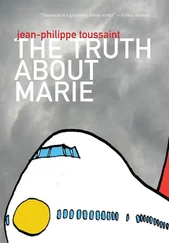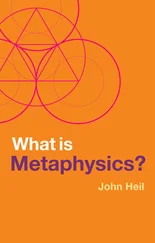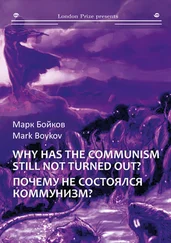But I’ll begin the story with something I believe we shouldn’t worry about—“firewalls,” a radically deviant picture of black holes recently advocated by colleagues, in which an observer falling into a black hole burns up right at the horizon. The firewall picture—really a clever renaming of a previously known phenomenon—has provoked some recent controversy, which has begun reaching the press. If correct, it could well mean that the black hole at the center of our galaxy is not a black hole at all: Instead, it is the firewall at the center of the galaxy and instantaneously destroys anyone or anything who ventures within about 12 million kilometers of its center.
I’m not worried that this scenario is correct, because it is too preposterous and removed from known physics, and I believe there are less preposterous alternatives. But the fact that otherwise serious physicists have forwarded it is definitely symptomatic of the profound crisis we face.
In short, the crisis is a deep conflict between fundamental physical principles that form the foundation of our most basic framework for describing physics. These pillars are quantum mechanics , the principles of relativity (special or general), and locality . These pillars underlie local quantum field theory, which serves as the basis for our description of physical reality—from the shining sun to the creation of matter in the early universe to the Higgs boson (if that’s what it is).
These principles clash when pushed to the extreme; the sharpest version of the problem arises when we collide two particles at sufficient energy to form a black hole. Here we encounter the famed black-hole information problem: If the incoming particles start in a pure quantum state, Hawking’s calculation predicts that the black hole evaporates into a mixed, thermal-like final state, with a massive loss of quantum information. This would violate—and thus doom—quantum mechanics. While serious people still consider modifying quantum mechanics, proposals to do so have so far created much bigger problems. For example, it has been argued that Hawking’s original proposed modification of quantum mechanics would imply that a “firewall” exists for all observers, everywhere! Quantum mechanics appears to be remarkably resistant to sensible modification.
If quantum mechanics is sacred, apparently other principles must go—either those of relativistic invariance or of locality, or both. The former likewise appears resistant to sensible modifications, but locality is a remarkably “soft” principle, in the context of a theory with quantum mechanics and gravity. So that seems a reasonable concept to suspect.
The basic statement of locality is that quantum information cannot propagate faster than the speed of light. At least as early as 1992, modification of locality to solve the problem of getting missing quantum information out of a black hole was proposed. In the following years, a picture involving an even more radical form of nonlocality took shape. This picture was based on the holographic principle and a new notion of complementarity, proposing that observations inside and outside a black hole are complementary, analogous to Niels Bohr’s complementarity of position and momentum measurements in quantum mechanics. Holography/complementarity was widely explored and became accepted by a significant segment of the physics community.
What has become clear in the past few years is that a picture based on complementarity is not only unnecessarily radical but also likely inconsistent. While the jury of the physics community may still be out on complementarity, new awareness of its apparent downfall has rekindled broader interest in the deep crisis we face.
In a context where one or more supposed bedrock principles must be discarded, we obviously need to be a little crazy—but not too crazy! Complementarity is an extreme and plausibly inconsistent form of nonlocality. On the other hand, if quantum mechanics is to be saved by allowing nonlocality inside a black hole—but you accept that quantum field theory holds everywhere outside a black hole—you encounter the firewall problem. Is there a less crazy alternative? I believe so, in the form of a more “nonviolent” nonlocality that extends outside what we would describe as the black hole horizon and transfers quantum information out. I say “would describe” because the horizon concept makes reference to a classical spacetime picture, which may well not be fundamentally correct. More could be said, but describing such nonlocality would violate the editorial marching orders of this forum.
Suffice to say: Whereas it appears that one of three basic pillars of physics must be modified and locality is the prime suspect, modification of locality is no small matter. Naïve modifications of locality—as often proposed by physicists “on the fringe”—generically lead to disastrous collapse of the entire framework of quantum field theory, which not only has been experimentally tested to a very high degree of accuracy but underlies our entire physical picture of the world. If such modification must be made, it must be subtle indeed. It also appears that the basic picture of reality as underlain by the fabric of space and time may well be doomed. What could replace it is a framework wherein the mathematical structure of quantum mechanics comes to the fore. I would say more, but… marching orders.
I will say that I am deeply concerned about how we will arrive at a complete and consistent theory of gravity. And that we must do so, in order to describe not only black holes (which have been found to be ubiquitous in the universe) but also both the early inflationary and pre-inflationary evolution of our universe, as well as our seemingly dark-energy-dominated future. The current problems at the foundations link to many big questions—and I fear it will be no small feat to resolve them.
THE END OF FUNDAMENTAL SCIENCE?
MARIO LIVIO
Astrophysicist, Space Telescope Science Institute; author, Brilliant Blunders: From Darwin to Einstein—Colossal Mistakes by Great Scientists That Changed Our Understanding of Life and the Universe
Fundamental physics appears to be entering a new phase. And this new phase has many physicists worried.
Human curiosity about natural phenomena has always exceeded what was merely necessary for survival. On one hand, this curiosity has led to the generation of elaborate mythologies and religions. On the other, it brought about the ascent of science.
The desire to explain the universe and make definitive predictions about cosmic phenomena on all scales has been one of the key drivers of science since the pioneering thinking of Galileo, Descartes, and Newton. The achievements have been truly astounding. In fact, we now have a verifiable “story” for the evolution of the universe from when it was no more than a minute old to the present.
One of the main pillars on which scientists have always constructed their theories (the so-called scientific method) is falsifiability— theories have to make clear predictions that can be directly tested by experiments or observations.
The hope has been that we can find a theory that will explain not only all the forces we observe in nature (gravity, electromagnetism, and the two nuclear forces) but also all the values of all the constants of nature (such as the relative strength of the forces, the ratio of the masses of the elementary subatomic particles, and so on). In the past two decades, however, ideas have emerged that maybe some of the constants of nature are not truly “fundamental” but rather “accidental.” Instead of one universe, these theories propose, there is really a huge ensemble of universes—a “multiverse.”
Читать дальше












